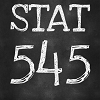Homework 02: Explore Gapminder and use R markdown
Overview
Consult the general homework guidelines.
Due before class Monday 2014-09-22.
The goal is to explore a newly imported a dataset. In particular, to establish workflows based on data.frame. You will make a couple of figures with ggplot2. You will learn how to author a dynamic report in R Markdown and share it on the web.
Remember the sampler concept. Your homework should serve as your own personal cheatsheet in the future for things to do with a new dataset. Give yourself the cheatsheet you deserve!
Bring rectangular data in
Work with the Gapminder excerpt introduced this week. If you really, really want to, you can explore a different dataset but get permission from Jenny.
Import the data with read.delim() and with read.table(). FYI: read.delim() is just a wrapper around read.table() with specific arguments set to certain values. Read the documentation!
- Load the Gapminder data with both functions without specifying args other than
file. Do you get the same resulting object in your workspace? Use all the ways we’ve learned to inspect an object to back up your claims with hard facts. - If you’re not getting the same object, why not?
- Develop the call to
read.table()that is equivalent toread.delim(), i.e. how do you need to set various arguments and describe this in prose as well.
Smell test the data
Explore your new data.frame.
- Is it a data.frame, a matrix, a vector, a list?
- What’s its mode, class?
- How many variables?
- How many rows/observations?
- Can you get these facts about “extent” or “size” in more than one way? Can you imagine different functions being useful in different contexts?
- What flavor is each the variable?
Explore individual variables
Pick at least one categorical variable and at least one quantitiative variable to explore.
- Characterize what’s possible, i.e. all possible values or max vs. min … whatever’s appropriate.
- What’s typical? What’s the spread? What’s the distribution? Etc., tailored to the variable at hand.
- Feel free to use summary stats, tables, figures. We’re NOT expecting high production value (yet).
But I want to do more!
This is just for people who want to take things further! NOT REQUIRED!
Play with this visual tool for exploring tabular data:
- http://setosa.io/blog/2014/08/03/csv-fingerprints/
- Yeah, you might need to get the Gapminder excerpt into comma delimited form to use the tool. See above re: being optional.
Check out the testdat package. Does it ease the pain of getting your read.table() arguments “just right”?
- https://github.com/ropensci/testdat
- Yeah, you will have to install from GitHub instead of CRAN. See above re: being optional.
Read What I do when I get a new data set as told through tweets from SimplyStatistics to get some ideas!
Report your process
You’re encouraged to reflect on what was hard/easy, problems you solved, helpful tutorials you read, etc.
Submit the assignment
Follow instructions on How to submit homework
Rubric
Start using our general rubric for specifics to evaluate, but be gentle this week!
Check minus: Hits the elements listed above in a really minimal or rote way, maybe even with a few mistakes/omissions. And/or it’s hard to figure out which file I’m even supposed to be looking at.
Check: Hits all the elements. No obvious mistakes. Pleasant to read. No heroic detective work required. Solid.
Check plus: Some “above and beyond”, creativity, etc. You learned something new from reviewing their work and you’re eager to incorporate it into your work now.
